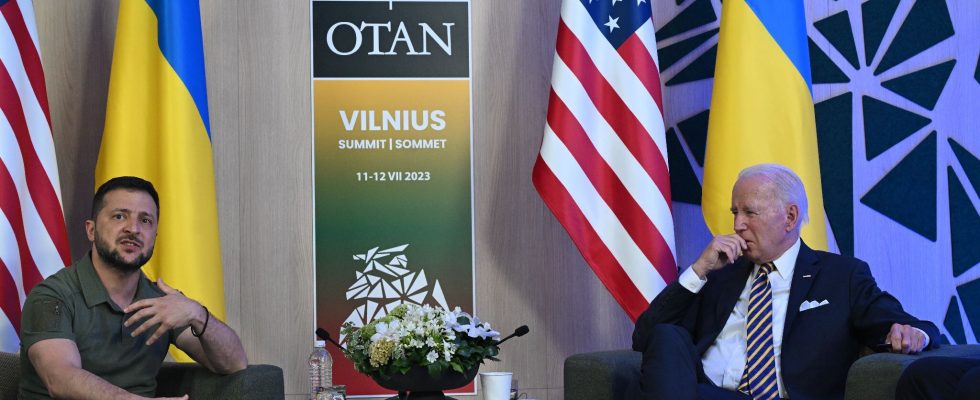This is perhaps the beginnings of a “Schengen area” for the armies of the North Atlantic Treaty Organization (NATO). On Wednesday January 31, Poland, Germany and the Netherlands signed a declaration providing for the creation of a “military corridor” to facilitate the movement of troops and equipment within NATO members. The project of greater military cooperation between these countries is regularly put forward, particularly since the Russian invasion of Ukraine.
Today, the ability of NATO forces to operate in Europe is still hampered by border restrictions and inadequate infrastructure, the newspaper highlights. Politico, which cites EU commanders and defense ministers. “Although NATO has made substantial progress in overcoming legal obstacles during cross-border operations, bureaucratic requirements, such as passport controls at some border crossings, and infrastructure problems, such as roads and bridges that cannot not accommodate large military vehicles, could slow down or even paralyze any allied response to an emerging threat,” continues the American media.
Before the war in Ukraine, these differences were dealt with without urgency. Since then, concrete cases of blockage have served as a warning. Flagship example: at the end of 2022, the delivery of Leclerc tanks from France to Romania had been delayed, due to lack of road authorization in Germany. This idea of facilitating military troops in NATO member countries is thus modeled on the Schengen agreement, which allows the free movement of people in the countries constituting this area.
Fear of Russia
A project that worries the Kremlin, whose officials quickly concluded that it was mainly motivated by the possibility of a Russian attack against a NATO member country, according to the weekly International mail. While debates on a “military Schengen” began in December 2023, Kremlin spokesperson Dmitri Peskov immediately insisted that Russia had never represented a threat to the Alliance. “I would like to emphasize once again that it is NATO that is constantly moving, with its infrastructure, towards our border. This can only worry us. And this can only lead to retaliatory measures to ensure our security “, he explained, quoted by the daily Kommersant.
In Russia, the agreement signed on January 31 between the Netherlands, Germany and Poland has caused a lot of ink to flow. It is already the “realization of a miniature military Schengen”, headlined the magazine Vzgliad. While according to Alexander Bartosh, of the Russian Academy of Military Sciences, this measure is mainly motivated by the need to militarily supply a Ukraine which is on the verge of defeat.
A long-standing project
Questions of “military mobility” have been on the European agenda since 2017, the date of a first action plan. The Dutch Minister of Defense at the time, Jeanine Hennis-Plasschaert, declared that “we must be able to move quickly wherever there is a threat”. “One of the key lessons learned from delivering weapons and military equipment to Ukraine to fight the Russian invasion is that every second counts. Rapid military mobility is crucial to responding to the crises emerging in our country. borders and beyond”, explained, at the end of 2022, the vice-president of the European Commission Josep Borrell.
Since then, texts intended to regulate and coordinate the movements of men and equipment of the Atlantic alliance across the entire continent have been signed. A unit was even specially created for this purpose in 2021: the NATO Joint Support and Enablement Command (JSEC). However, these advances do not seem sufficient for those responsible for the transatlantic alliance. “We are running out of time. What we do not do in peacetime will not be ready in the event of a crisis or war,” insisted Alexander Sollfrank, head of the Joint Support and Enablement Command (JSEC) at the end of December. of NATO. “Although the JSEC was created in 2021 to streamline preparations for a potential war with Russia, its work is still hampered by national regulations,” he recalled.
